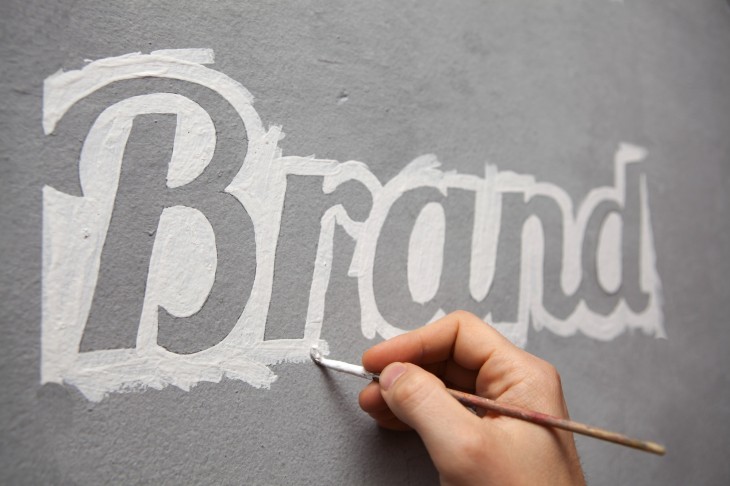
Ilya Pozin is a serial entrepreneur, writer, and investor. He is the founder of online video entertainment platform Pluto.TV, social greeting card company Open Me and digital marketing agency Ciplex.
Rebranding can be a risky business. It’s more than just a fresh coat of paint on your company brand, it also signals your organization is embracing a new way of doing business. Plus, your current brand already has recognition and market share, so it’s important not to throw out the good with the bad.
Change can be scary, but it’s often necessary – especially as markets can be quick-moving and volatile. Learning from common rebranding mistakes can help your company jump big pitfalls and make the right moves. Here are the seven mistakes you need to avoid in order to successfully rebrand:
1. It’s more than a name (or logo)
Too often, a brand is confused with its physical markers: its logo, name, website, or culture. Slapping a new mascot on your company won’t fix all of its problems – and might even make them worse.
When the Italian restaurant chain Olive Garden began struggling with sales, it seemed like a perfect time to rebrand. Unfortunately, the new logo came under fire as soon as it was unveiled. Critics argued the new logo didn’t really fit the company’s existing brand and it failed to tell the company’s story.
When we decided to rebrand my company Ciplex to Coplex, we thought long and hard about what the rebrand would really mean for the business. The reason we’re rebranding is to change our emphasis to one of co-creation with our clients. We fundamentally believe the client-agency relationship is broken, and we believe the only way to fix this relationship is to foster collaboration.
“A brand is a promise a company makes to their consumers,” said Mathew Brian, founder of Mathews Columbus, who recently assisted with the Coplex rebrand. “You are not controlling the conversation from a unique point of view if you have no brand.”
2. Forgetting your market position
You can’t be beholden to the whims of your target market, but you should still understand their lifestyle and what they need and want from your brand. You need to be a leader, but you also have to understand how your product or service fits into the life of your consumers.
For instance, when Tropicana orange juice rebranded its packaging, customers were irate. Customers complained the new packaging looked too much like a cheap imitation, or a generic store brand, instead of the product they were used to.
Tropicana didn’t understand the emotional connection their customers had to their morning ritual, and how orange juice played a part in their customers’ waking routine. Tropicana was forced to return to its old packaging because it didn’t fully consider the needs of the market before making the switch.
3. Changing your name… just because
Your name should tell an important story about your company. It’s a big part of the reason we decided to change our name to show clients our dedication to a truly collaborative experience.
Naming, however, is truly an art form. We live in a world where FreeCreditReport.com, Google and Apple are all brand names (some are even being used as a verb, like the act of Googling something).
Names can be esoteric or they can be definitive, and each of those naming strategies comes with its own form of challenge.
For instance, for every Apple success story, there’s a story like Wesabe. The personal finance app was beaten out by competitor Mint, in part because the name didn’t tell enough of the company story.
Other companies have gotten into trouble by dropping the most important part of their names, like when Pizza Hut briefly began referring to itself as “The Hut.” The company soon learned it was important to keep Pizza in its name, as that was the important part of its brand identity.
Unfortunately, naming your company after a concept can also backfire. CreditKarma and other competitors have infiltrated the FreeCreditReport.com name with confusion by offering free credit reports in their commercials. If your company’s name can dilute into a general concept, it can be hard to maintain market share.
4. Not doing your homework
Why is the rebrand necessary? What does the new brand say about your company? When Gap tried to rebrand with a new logo, the results weren’t exactly what it’d anticipated. Not only were consumers not excited about the new brand image, many thought it made the brand look cheap.
Before you commit to a costly and labor intensive rebrand, do your homework at every step of the process. Yahoo CEO Marissa Mayer came up with the new company logo over the course of a weekend, using only three employees and an intern as a sounding board – though it went through a month of teasing various logos before the unveil.
It’s important to test new brand images and copy to ensure it still works for your audience. While you need to lead, not follow, your market, you should also understand how your company fits into their lifestyle.
5. Following the herd
Your brand should capture a larger conversation your company is trying to have with its market, instead of rebranding to look hip or modern for a certain customer segment. It’s important for the company leaders to take control of any rebranding effort and set the agenda from the top.
“I think rebranding is much easier top down,” Brian said. “I think leaders should lead. The idea of brand by committee almost always blows up.”
6. Failing to integrate your new brand
Don’t just slap a new label on a few things and think you can call it a day. Too many companies ignore systematic integration in favor of a shiny new logo; the rebrand has to trickle into every aspect and part of your business. Everything from the financial practices to the HR policies should be measured against the rebranding promise you have chosen.
Too often, companies stop before they’ve even really begun. They’ve confused a minor physical brand expression like a logo or motto with the larger promise the rebrand is making to employees, customers, and clients
Look at the rebrand for fast food chain Wendy’s, which has been inconsistently applied in the chain’s restaurants. Go to a Wendy’s today and it’s often a hodgepodge of old and new logo and branding materials. If your company is rebranding, commit 100 percent to the effort.
7. Burying the lead
Be authentic to make your brand one to remember. If your company is amazing at something, make this an essential part of your brand. Know what you’re good at, what makes your company great, and what differentiates you from the competition. Make sure this is an important part of your brand messaging.
“Inauthenticity is the largest rebranding mistake,” Brian said. “When a brand tells you who it is, customers believe it. Don’t pick something you cannot authentically capture at every level of your business.”
Rebranding your company can be a big challenge, but it can also be a huge opportunity to redirect your organization and change your story. If you truly believe in your message, keep your brand authentic and avoid these missteps, a successful rebrand is just around the corner.
What do you think? What are the biggest rebranding mistakes you’ve seen? Share in the comments!
Get the TNW newsletter
Get the most important tech news in your inbox each week.


